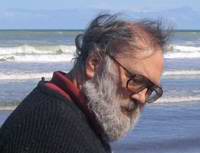This book is a classic in the field of mysticism and has been long out of print, and practically unavailable: The only copy in the Auckland public library system went missing some years ago. For this reason I have made substantial portions of the book available on this site (along with comments).
The basic thesis Stace advances in this book is that mysticism is an area of experience that is neither objective nor subjective, and one that is beyond the laws of logic.
Logic is the set of rules which governs relationships between a multiplicity of things. When that multiplicity disappears in the undifferentiated unity of the mystical experience, so does logic, and so does the subsequent order/disorder which Stace postulates as the feature that distinguishes objective from subjective reality.
The area is then ripe for and replete with paradox as a characteristic feature of attempts to describe it. DCW |



